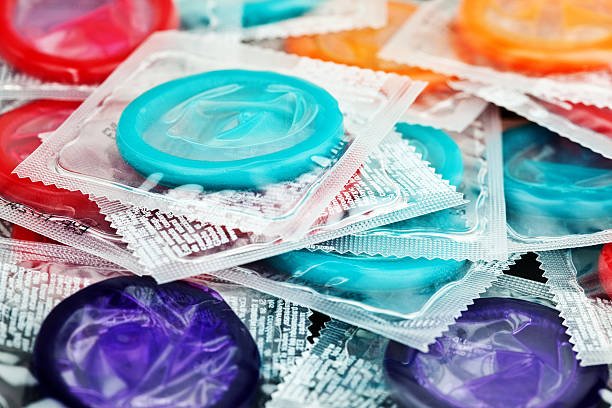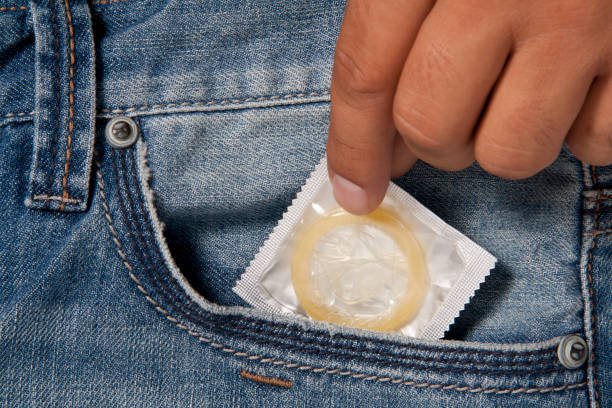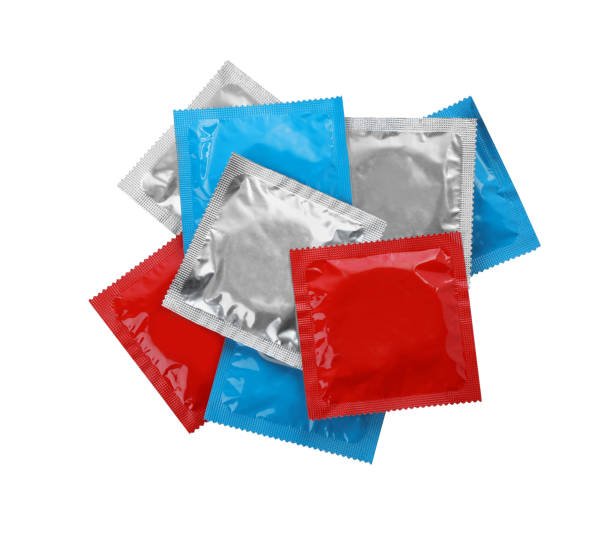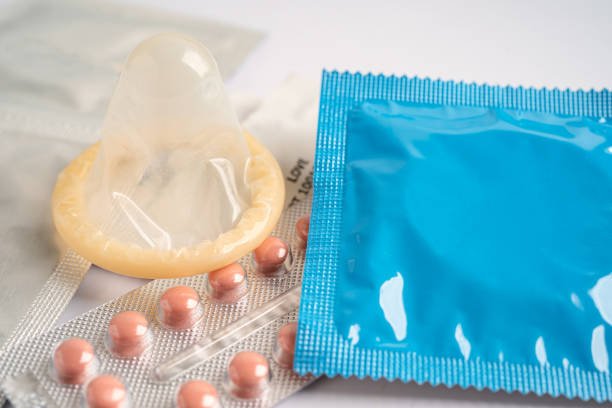Finding the right condom size can be a bit of trial and error—it's not as simple as just picking one off the shelf. Much like shoes, condom sizes vary between brands, and even a condom labeled the same size might feel different depending on the manufacturer. The best approach is to experiment with a few different brands (in the privacy of your home, of course) until you find the one that fits you best.
This guide will help you understand the various condom sizes, how to determine the one that suits you best, and why choosing a high-quality condom is always the optimal choice.
Please note: This article focuses specifically on external (male) condoms. Internal (female) condoms typically come in a single, standard size.
Risks of Using the Wrong Condom Size

If you paid attention during high school sex education, you likely learned about the numerous benefits of condoms. They are an excellent form of contraception, offer protection against sexually transmitted infections (STIs), and can even help delay ejaculation for those who experience premature ejaculation (PE). However, using the wrong condom size can significantly undermine these benefits and negatively impact both comfort and effectiveness. In some cases, it may even deter you from using condoms altogether.
Here are some of the risks associated with wearing a condom that doesn’t fit properly:
1. Slippage During Intercourse
A condom that's too large can easily slip off during sex, increasing the risk of unintended pregnancies and exposing you and your partner to sexually transmitted infections (STIs). Even if the condom stays in place initially, a loose fit can cause it to move or roll off when you or your partner change positions.
2. Tears and Breakage
On the flip side, a condom that’s too small may tear or break, compromising its protective barrier. This increases the likelihood of condom failure, leaving you vulnerable to STIs and unintended pregnancies. The stress on the material caused by a tight fit can also lead to premature wear and tear, making breakage more likely.
3. Restricted Blood Flow
Wearing a condom that is too tight can impede blood flow to the penis, leading to discomfort and possibly even erectile dysfunction (ED). A constricted fit can reduce circulation, which may make it harder to maintain a firm erection. In some cases, this can even cause numbness or pain during intercourse, detracting from the overall experience.
4. Hindered Sexual Pleasure and Orgasm
Condoms that don’t fit well can interfere with sexual pleasure for both partners. A poorly fitting condom can feel uncomfortable or unnatural, causing distractions during sex. According to a 2010 study of 436 men, ill-fitting condoms not only increase the risk of breakage, slippage, and erectile dysfunction but also make it more difficult for both partners to achieve orgasm. In fact, some participants reported that ill-fitting condoms led them to remove the condom before intercourse was finished.
5. Decreased Condom Use Over Time
In a 2020 review, research suggested that using condoms that don’t fit properly is linked to a lower rate of consistent condom use and a higher risk of condom failure. When individuals have negative experiences with poorly fitting condoms—whether it’s discomfort, reduced pleasure, or failures like breakage—they may be less likely to use them in the future. This can undermine your long-term commitment to safe sex practices.
6. Increased Anxiety About Safe Sex
Frequent issues with condom fit can cause anxiety surrounding safe sex practices. When you experience discomfort, slippage, or breakage, it can lead to frustration and a reluctance to use condoms at all. Over time, this anxiety may even discourage you from using protection, leaving you at higher risk of unintended consequences like pregnancy or STI transmission.
Choosing the Right Condom Size: A Comprehensive Guide
Selecting the correct condom size is essential, but it’s not always a simple process. Unlike other personal items, condom sizes can vary between brands, much like shoes. This means that even if you think you know your size, different manufacturers may offer slightly different fits, and the same size can feel different depending on the brand. The best approach is to experiment with several condom brands (in private, of course!) until you find the one that fits you most comfortably.
This comprehensive condom size guide will help you understand what different condom sizes mean, how to find the right fit for you, and why choosing a high-quality condom is always the best option.
Please note: This article focuses specifically on external condoms, sometimes referred to as male condoms. Internal condoms generally come in a standard size.
The Dangers of Using the Wrong Condom Size
If you paid attention during sex education in high school, you know that condoms are an effective form of contraception and protection against sexually transmitted infections (STIs). They can even help delay ejaculation for those dealing with premature ejaculation (PE). However, using the wrong condom size can significantly reduce these benefits and negatively impact comfort and effectiveness. It may also discourage you from using condoms in the future.
Here are some of the risks associated with wearing a condom that doesn’t fit properly:
1. Condom Slippage
A condom that’s too large can easily slip off during sex, which not only increases the risk of unintended pregnancies but also leaves you and your partner vulnerable to STIs. Even if the condom stays on initially, a loose fit can lead to it moving or rolling off when you or your partner change positions.
2. Tears and Breakage
On the other hand, condoms that are too small may break or tear during intercourse. A torn or broken condom cannot provide adequate protection, leading to the same risks mentioned above, including exposure to STIs and unintended pregnancies. The stress placed on the material by a tight fit can also result in premature wear and tear, making breakage more likely.
3. Impeded Blood Flow
Wearing a condom that is too tight can restrict blood flow to the penis, which can lead to discomfort or even erectile dysfunction (ED). A constricting condom can reduce circulation, making it more difficult to maintain a firm erection. Additionally, this can cause numbness or pain during intercourse, which detracts from the overall experience.
4. Difficulty Reaching Orgasm
Sex should feel enjoyable, but a poorly fitting condom can detract from the experience. A 2010 study involving 436 men found that ill-fitting condoms not only increase the risk of slippage, breakage, and ED, but they also make it more difficult for both partners to achieve orgasm. In some cases, participants removed the condom before intercourse had even finished due to discomfort or reduced sensation.
5. Decreased Condom Use Over Time
A 2020 review highlighted that people who experience discomfort or condom failure due to an incorrect size are less likely to use condoms regularly in the future. This can result in a higher risk of unwanted pregnancies or the transmission of STIs. Negative experiences with ill-fitting condoms may lead to a reluctance to use them again, undermining the goal of safe sex.
6. Increased Anxiety Around Safe Sex
Frequent issues with condom fit can also create anxiety surrounding safe sex practices. If a condom keeps slipping off, tearing, or causing discomfort, it can lead to frustration and hesitation to use protection in the future. Over time, this anxiety may even discourage condom use altogether, increasing the risk of unprotected sex.
How Should a Condom Fit?
To ensure maximum protection and comfort, a condom should fit as follows:
- Snug, but not tight: The condom should fit snugly around the base of the penis without feeling constrictive. If it feels too tight or causes discomfort, the size may be too small.
- No slippage: The condom should not slip off during intercourse. If you notice it slipping, it's likely too loose.
- Full coverage: A properly fitting condom should cover the entire penis from the tip to the base, with about half an inch of space at the tip to catch sperm.
How to Measure for the Right Condom Size

If you’ve never measured your penis before, now is a great time to do so. Knowing both the length and circumference of your penis will help you find the right condom size.
1. Measuring Your Penis Length
The average erect penis length is about 5.2 inches (13.12 cm), and the average flaccid penis length is about 3.6 inches (9.16 cm). However, everyone is different, and your measurements may fall above or below these averages, which is completely normal.
Here’s how to measure your penis length:
- Use a flexible tape measure or a piece of string and a ruler.
- Place the end of the tape or string at the base of your penis (near the pubic bone).
- Stretch the tape or string along the length of the erect penis to the tip, and record the measurement.
While you can measure your penis when it's flaccid, it’s more accurate to measure it when erect, as this is how condoms will fit in real use.
2. Measuring Your Penis Girth (Circumference)
Knowing your girth is equally important for finding the right condom. To measure girth, use a soft measuring tape to wrap around the thickest part of your erect penis. Alternatively, you can use a piece of string and then measure the string with a ruler.
- Small condoms typically fit men with a girth of less than 4.7 inches (12 cm).
- Standard condoms typically fit men with a girth between 4.7 inches (12 cm) and 5.1 inches (13 cm).
- Large condoms are designed for men with a girth larger than 5.1 inches (13 cm).
Once you have your measurements, you’ll have a better idea of which condom sizes to try.
How to Measure Your Penis Girth (Circumference) for the Right Condom Fit
When selecting the right condom, penis girth (or circumference) plays a more significant role than length in ensuring a comfortable and secure fit. A condom that fits your girth properly will provide better protection, prevent discomfort, and enhance sexual pleasure for both you and your partner.
Step-by-Step Guide to Measuring Penis Girth:
- Use a Flexible Measuring Tape
Take a soft, flexible measuring tape—similar to the kind used in sewing or tailoring. - Wrap the Tape Around the Thickest Part of Your Erect Penis
Gently wrap the tape around the circumference of your penis at its thickest point, typically around the middle or base of the shaft. Ensure that the tape is snug but not tight, and make sure it’s lying flat against the skin, without gaps or twists. - Record the Measurement
Once the tape is fully wrapped around, take note of where the two ends meet. This is your penis girth, which will help you determine the ideal condom size. - Alternative Method: Using String and a Ruler
If you don’t have a flexible measuring tape, you can use a piece of string or thread. Wrap the string around the thickest part of your erect penis, mark where the string overlaps, and then measure the length against a ruler to determine the circumference.
Why Girth Matters More Than Length
While penis length is important, girth is the key factor in ensuring that your condom fits securely without being too tight or too loose. A condom that’s too tight may cause discomfort or even break, while one that’s too loose can slip off, compromising both protection and pleasure.
Generally, condom sizes are categorized as follows based on girth:
- Small Condoms: Typically fit a girth of less than 4.7 inches (12 cm).
- Standard Condoms: Fit a girth between 4.7 inches (12 cm) and 5.1 inches (13 cm).
- Large Condoms: Designed for a girth larger than 5.1 inches (13 cm).
Having an accurate measurement of your girth will guide you to select the best condom size, ensuring comfort, safety, and enhanced sexual experience.
Condom Size Chart: How to Choose the Right Condom for You

Just as penises come in various shapes and sizes, so do condoms. Condom manufacturers use different terminologies like "regular" or "standard," but the meaning behind these terms can vary greatly from one brand to another.
What’s even more complicated is that one brand might label a condom as "large," while another might call a condom with the same dimensions "regular." Therefore, even if a "regular" condom from one brand fits you well, this doesn’t necessarily mean that a "regular" from another brand will offer the same fit.
Understanding your penis size, specifically your girth (circumference), is key to finding the most suitable condom for you.
Here’s a breakdown of the condom sizes based on nominal width (the flat width of the condom), which corresponds to your penis girth:
| Size | Other Terms Used | Nominal Width (mm) | Nominal Width (inches) |
|---|---|---|---|
| Small/Tight Fit | Slim Fit, Snug Fit, Compact | 49–52 mm | 1.9–2.04 inches |
| Regular/Standard | Classic, Original, Traditional | 52–56 mm | 2.04–2.2 inches |
| Large/Extra Large (XL) | XL, XXL, Magnum, Extra Large | 56–60 mm | 2.2–2.3 inches |
| XXL/Extra Extra Large | XX, Super Large, King Size | 60–64 mm | 2.3–2.5 inches |
To calculate your ideal condom size, simply multiply the nominal width by two to get your penis circumference. This will give you a more accurate estimate of the size that will provide the best fit.
Why Girth Matters More Than Length
While the length of a condom is important, the girth is the critical factor in ensuring a snug and secure fit. The right girth helps the condom stay in place, preventing it from slipping off or breaking during use. Unlike latex, which is the most elastic material, condoms made from materials like polyurethane or lambskin might not stretch as much, making proper sizing even more important.
What About Condom Length?
While condom length is also a consideration, it's generally not as significant as width. Most condoms are designed with enough flexibility and stretch to accommodate different penis lengths, especially since latex is highly elastic. That being said, if you find that length is an issue, you can always opt for a longer condom size.
Example: SexLifeToday Ultra-Thin Condoms
At SexLifeToday, we offer ultra-thin condoms that are designed to provide maximum comfort and sensitivity. Our standard-size condoms have a nominal width of 54 mm (2.12 inches), making them a versatile choice for many users. Crafted from high-quality latex, these condoms feature a flexible, honeycomb structure that ensures a snug fit and better sensitivity. The innovative raised internal design maximizes pleasure, offering the sensation of a second skin while maintaining the highest standards of safety.
Tips for Finding the Perfect Fit
- Measure your girth: Use a soft measuring tape to measure around the thickest part of your erect penis to get an accurate reading of your girth.
- Don't rely solely on labels: Condom sizes can vary by brand, so it's worth trying different brands and sizes to find the one that fits best.
- Check for comfort: A well-fitting condom should feel snug but not restrictive. If it’s too tight, it might cause discomfort; too loose, and it could slip off during intercourse.
By finding the right condom size, you can ensure a more comfortable and safer experience, enhancing your overall pleasure while minimizing the risk of condom failure.
Factors Affecting Perfect Condom Fit

Choosing the right size condom is fundamental for ensuring a perfect fit, but it's also important to consider the material of the condom and whether lubricants are used, as these factors significantly impact fit, comfort, and effectiveness.
1. Condom Design Features
Design features play a crucial role in enhancing comfort, fit, and pleasure. For example, some condoms incorporate special textures like a hexagonal honeycomb pattern. These not only offer greater flexibility and strength but also increase sensitivity and pleasure during intercourse. Additionally, textured condoms, such as ribbed or spiral designs, can increase friction and reduce the risk of slippage, improving both the fit and contraceptive effectiveness.
2. Condom Material
The material of a condom directly affects its elasticity, comfort, and durability. Latex is the most common material and is highly elastic and strong, providing a low failure rate. A 2003 study showed that latex condoms have a failure rate of less than 2%, much lower than alternative materials such as polyurethane or polyisoprene, which have failure rates above 8%.
However, latex can cause allergic reactions in some individuals, making polyurethane condoms a viable alternative. Polyurethane condoms are less elastic but offer good durability and breathability, making them suitable for those with latex allergies.
Sheepskin condoms, while marketed as offering a more natural feeling, actually have poor elasticity and are more prone to slippage. Their effectiveness as a contraceptive is only between 64% and 97%, making them less reliable.
3. Lubricant Selection and Application
Using the right amount of lubricant can significantly improve condom fit and comfort. Lubricants reduce friction and prevent condoms from breaking or slipping off. However, excessive lubrication can cause condoms to slip off, while insufficient lubricant may increase the risk of breakage.
Water-based or silicone-based lubricants are ideal for use with latex condoms, as oil-based lubricants can degrade latex, increasing the risk of failure.
4. Choosing the Right Condom Size
Condoms come in various sizes, which not only vary by length but also by width. Choosing the right width ensures that the condom is neither too loose nor too tight. Condom width is typically measured by its "flat width," and selecting one that fits comfortably is key to preventing slippage or breakage.
- Small/Tight Fit: Flat width of 49-52mm (1.9-2.04 inches)
- Standard Fit: Flat width of 52-56mm (2.04-2.2 inches)
- Large Fit: Flat width of 56-60mm (2.2-2.3 inches)
- Extra Large Fit: Flat width of 60-64mm (2.3-2.5 inches)
To find the correct size, measure your circumference and select a condom whose flat width is approximately half of your circumference. A proper fit ensures better performance and comfort.
5. Gender and Penis Size Considerations
Studies have shown that many men are unaware of the various condom sizes available and often choose a “one-size-fits-all” or “standard” size, which may not suit their body. In fact, many men’s penis sizes differ from the "standard" size, resulting in condoms that are either too tight or too loose. This mismatch can lead to condom breakage or slippage, and negatively affect their attitude towards condom use, ultimately reducing its effectiveness.
Tips for Finding the Right Condom Size

Wearing a condom is not only an effective method of contraception, but it also serves as a crucial means of protecting your sexual health by preventing sexually transmitted infections (STIs) and diseases. Choosing the right condom, such as the Hims Climax Control Condom, can even help address specific concerns like premature ejaculation, enhancing both protection and pleasure.
However, the most important factor is ensuring that the condom fits properly.
Key Tips for Finding the Right Condom Size

- There is No One-Size-Fits-All Condom
At SexLifeToday, we understand that condom sizing is not a one-size-fits-all solution. Just like our comprehensive size chart indicates, condoms come in various sizes, from snug-fitting options for those who prefer a more close-fitting experience to extra-large condoms for individuals requiring more room. Selecting the right size is crucial for both comfort and effectiveness. - The Risks of Using the Wrong Size Condom
Using the wrong condom size can lead to several issues. A condom that is too loose may slip off during intercourse, while one that is too tight can cause discomfort or break more easily. Either scenario significantly increases the risk of unintended pregnancy or the transmission of STIs. Additionally, incorrect sizing may cause discomfort for either you or your partner, detracting from the overall experience. - Material and Design Influence Fit
Even when you choose the correct size, the material and design of the condom can affect the fit and feel. Different condom materials—such as latex, polyurethane, or polyisoprene—offer varying levels of elasticity and strength, influencing how they conform to your body. Likewise, textured or ribbed designs, while enhancing pleasure, can also alter the fit. Finding a combination of size, material, and design that suits your needs is key to a comfortable and safe experience. - The Importance of Experimenting with Different Options
If you've had a less-than-ideal experience with condoms in the past, don't hesitate to explore different sizes, materials, and brands. What works for one person may not work for another, and trial and error can lead to discovering the perfect fit for your body and preferences. With a variety of options available, including those designed to enhance sensation or prolong pleasure, there is a condom out there that will meet your unique needs.
Safe, enjoyable sex is within your reach, and wearing the right condom is a significant part of that. At SexLifeToday, we encourage you to invest time in finding the perfect condom for you. By selecting the right size, material, and design, you ensure both protection and comfort, making your sexual health a priority. Don't be afraid to experiment with different options until you find what works best for you—after all, the best condom is the one that fits.
